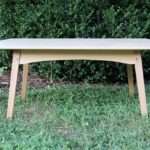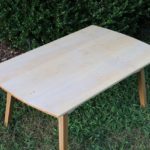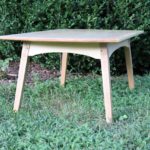I have a new microwave, or rather I have an old microwave that is new to me. I don’t like it. It is bigger and more powerful than my old microwave. I didn’t need a bigger and more powerful microwave, but I don’t object to the size or the power. Actually I wasn’t entirely convinced I needed a microwave at all; I use it for very few things. Mainly I defrost meat, because I am good at putting together dinner on the fly but bad about planning ahead; and soften butter, because my daughter likes to bake, but, well, ditto.
I don’t like this microwave because it has too many single-use buttons and multi-step programmed procedures and not enough basic flexible options. I don’t mean that it is too complicated as such, because some tools have a lot of functions and thus need complicated means of interaction. The problem is that its interface is far more complicated than it needs to be, and sufficiently complicated that its design actually interferes with intelligent use.
Here’s an example. If I wanted, with my old microwave, to soften a stick of butter to cool room temperature, I could simply “defrost” it for about 20 seconds. I had only to lower the power and set a time. On the new one, there isn’t a simple way to lower the power; there are only options for various specific foods and purposes. So I have to press “soften/melt,” then watch a scrolling digital readout asking me to press a number for whether I’m softening or melting, and then another number for what sort of food item I have, and then a third for how many sticks of butter. The old process required me to press four easily readable buttons (defrost, 2, 0, start) and worked perfectly, because I’d experimented a bit to see how long it took to soften a stick of butter. The new process takes a good ten seconds to get started and halfway melts the butter, so that I have to stand and watch it through the (typically streaked and greasy) glass. And if I want to soften half a stick, I’m out of luck. Same for defrosting less than a pound of meat. It simply isn’t an option. And while there may be some way to make the machine do what I want, I’ll have to find a manual somewhere online to figure out how, because the “custom” settings aren’t.
I was thinking, yesterday, about how I would solve this problem. One way would be to plan ahead and/or just use the gas stove, but that’s not really in keeping with the spirit of the age, so take it as a design problem. Here are some observations:



